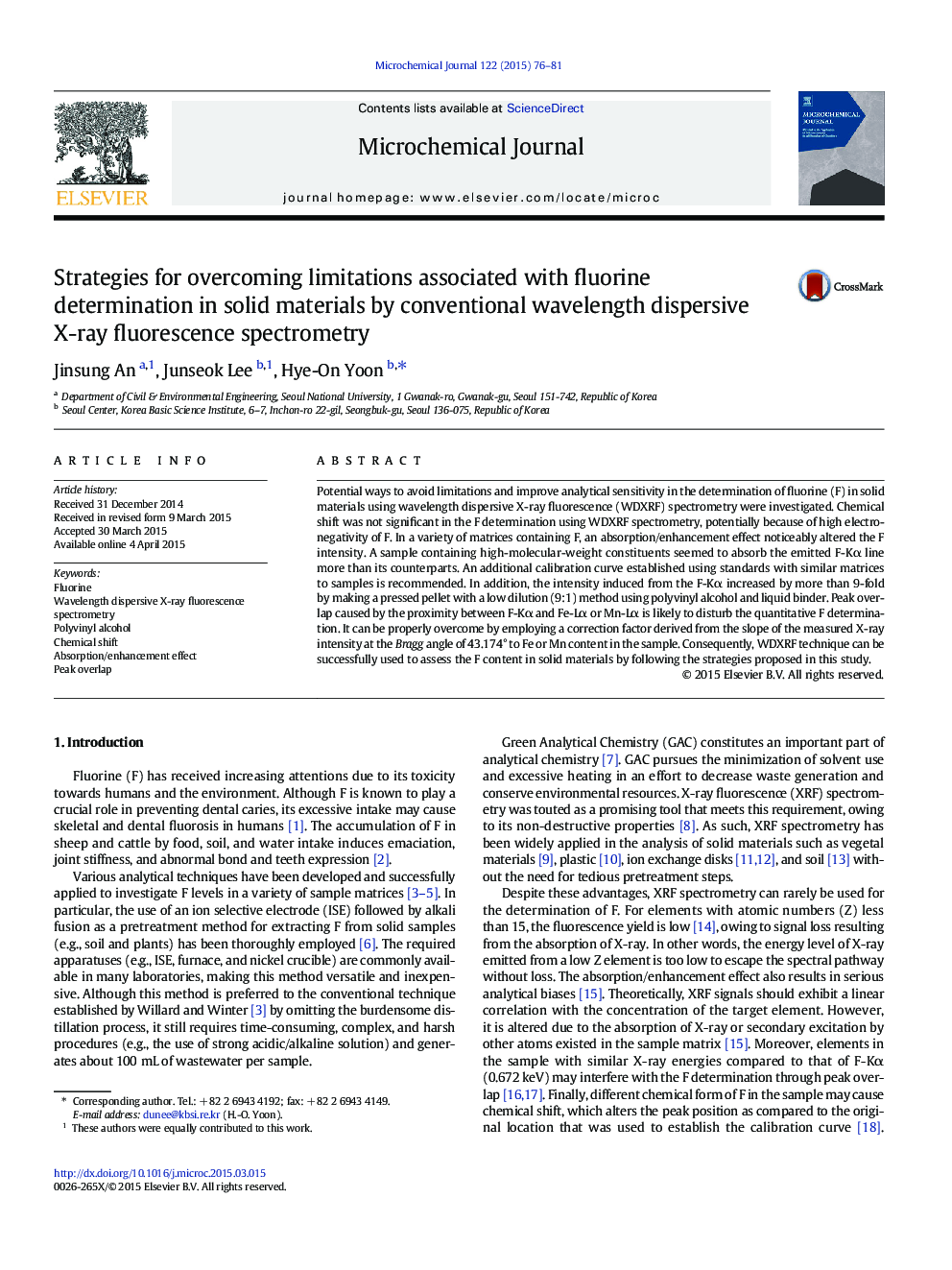| Article ID | Journal | Published Year | Pages | File Type |
|---|---|---|---|---|
| 1227763 | Microchemical Journal | 2015 | 6 Pages |
Abstract
Potential ways to avoid limitations and improve analytical sensitivity in the determination of fluorine (F) in solid materials using wavelength dispersive X-ray fluorescence (WDXRF) spectrometry were investigated. Chemical shift was not significant in the F determination using WDXRF spectrometry, potentially because of high electronegativity of F. In a variety of matrices containing F, an absorption/enhancement effect noticeably altered the F intensity. A sample containing high-molecular-weight constituents seemed to absorb the emitted F-Kα line more than its counterparts. An additional calibration curve established using standards with similar matrices to samples is recommended. In addition, the intensity induced from the F-Kα increased by more than 9-fold by making a pressed pellet with a low dilution (9:1) method using polyvinyl alcohol and liquid binder. Peak overlap caused by the proximity between F-Kα and Fe-Lα or Mn-Lα is likely to disturb the quantitative F determination. It can be properly overcome by employing a correction factor derived from the slope of the measured X-ray intensity at the Bragg angle of 43.174° to Fe or Mn content in the sample. Consequently, WDXRF technique can be successfully used to assess the F content in solid materials by following the strategies proposed in this study.
Keywords
Related Topics
Physical Sciences and Engineering
Chemistry
Analytical Chemistry
Authors
Jinsung An, Junseok Lee, Hye-On Yoon,
